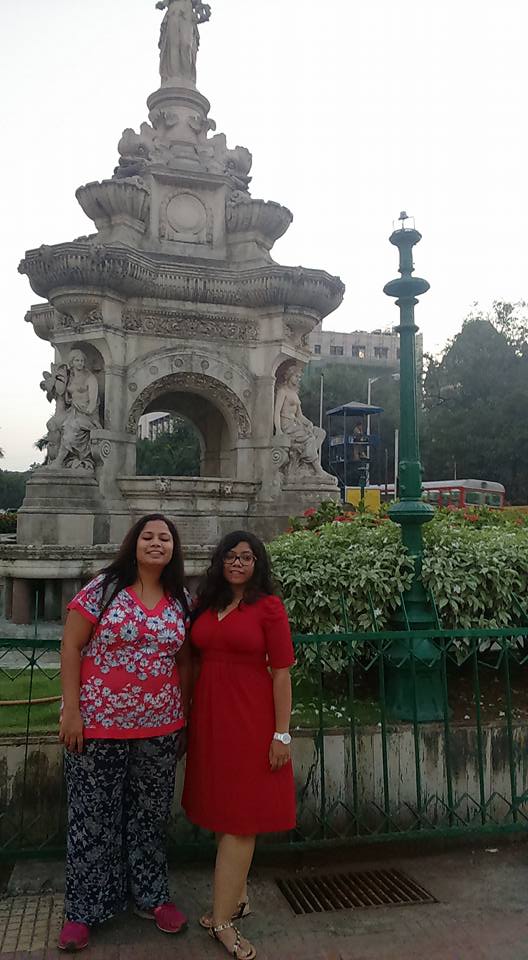Mumbai, undoubtedly, is one of my favorite cities of all the ones I have visited till date. There was a time I was so scared of this place – it’s fast pace and it’s complexity would scare the living daylights out of me. But the more I visit it, the more I love it. And in Mumbai, my favorite area would be South Mumbai, or SoBo. I always, always prefer to stay at CST, which keeps me in close proximity to the reputed local train network as from CST I can easily hop onto a harbor line as well as a central line, while just 15 minutes walk away I have Churchgate where I can easily catch a western line, while still getting a hotel room well within a budget.
One of the areas in SoBo is Fort. Fort is essentially business district, but is now abuzz with loads of old Parsi cafes, and cute eateries with amazing food to offer. This rea was said to be the heart of the city during the 18th century. It’s called as ‘Fort’ because of Fort George that was built by the East India Company around the then Bombay castle. Geographically speaking, this area goes from the docks on the sea coast in the east to the Azad Maidan in the west, and the CST in the north to the Kala Ghoda in the south. The area is home to BSE, RBI, Tata headquarters and a lot of other reputed bank HQs.
One of the famous roads in Fort area is the Dadabhai Naoroji Road, also known as the Mile Long Road. At the end of this historic road, lies a landmark that everyone talks about, but nobody knows about – The Flora Fountain. People pass by the fountain, people use it as a landmark in their addresses, people use it to give directions, but they never really see the beauty of it, or known what it is or why it is.
Flora fountain stands at the Hutatma Chowk or the Martyr’s square, is an ornamental beautiful, exquisitely sculpted architectural heritage monument, and it forms an essential part of Mumbai’s heritage. It was built in 1864 at a total cost of Rs.47,000 or 9000 pounds sterling.

The Flora fountain was originally intended for the Victoria Gardens. In 1860, the Old Mumbai Fort was demolished as part of the then Governor, Sir Bartle Frère’s efforts to improve civic sanitation and to help out with the urban space requirements of the growing city. The Fort had been built between 1686 and 1743 by the East India Company and it had three gates – the Apollo Gate, the Church Gate and the Bazaar Gate, plus a moat, an esplanade, open spaces on it’s western fringes to control fires and the residential zones. There was also a small road called the Hornby Road that went through it. After the Fort was demolished, this Hornby Road was widened into abroad avenue, commercial plots were developed on it’s western side with new commercial buildings built in the Neo Classical and Gothic Revival designs. This Hornby road then got renamed as the Dadabhai Naoroji Road. It was colonial splendor at its best with the road connecting the Crawford Market to the Victoria Terminus or VT or CST on one end and the Flora Fountain at the other end.
The Flora Fountain stood at the exact same spot where the Church Gate of the Fort has stood. The Church Gate had been named so for the St. Thomas Cathedral that stood there. The Flora Fountain was built by the Agri-Horticultural Society of Western India, out of a donation of Rs.20000 given by Cursetjee Fardoonjee Parekh. It was designed by Richard Norman Shaw, who has a record of building beautiful buildings in London including the famous Piccadilly Hotel. The Portland stone for building the fountain was imported by James Forythe. The fountain was originally named after Sir Bartle Frère, whose progressive policy had resulted in the development of many public buildings in Mumbai. However, before the unveiling, the fountain’s name was changed and made as Flora Fountain, named after ‘Flora’, who is the Roman Goddess of flowers and spring season. Goddess Flora’s statue built in Portland stone stands atop the fountain. The four corners of the fountain have different mythological figures as well. The fountain was originally supposed to stand at the Victoria Gardens in Byculla which were built in 1908, but then there was a change of plans.

The chowk or the square where the Flora Fountain stands is also called as the Piccadilly Circus of Mumbai as it is where five streets meet, very much similar to its London counterpart. In 1960, in order to commemorate the martyrdom of the brave people who laid down their lives for the birth of Maharashtra, it ws renamed as Hutatma Chowk, with a stone statue bearing a pair of torch holding patriots.
So, the next time you go around Flora Fountain, you know the kind of heritage you are going around. It’s a symbol of a time gone by, and it is something I would definitely always remember!

Reblogged this on blackbeautyandme.
LikeLike